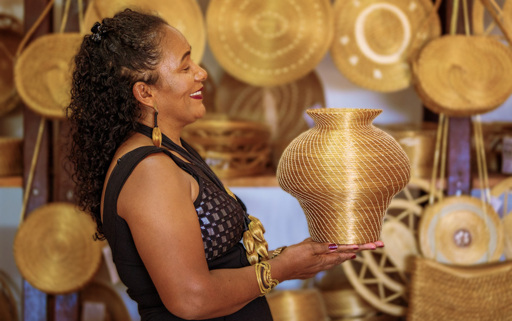JALAPÃO, Brazil — Capim dourado, or golden grass, grows in Jalapão, a wild part of the Brazilian Cerrado, the most biodiverse savanna in the world. With its unique color, the grass has lifted women through generations, bringing security and beauty into their lives. In Afro Brazilian Quilombola communities, they gather as artisans to craft all sorts of traditional items: vases, hats, purses, fruit bowls, sous plats…their art became their main source of income, reaching far beyond Jalapão. The grass grows only in the wetlands of the Cerrado, the veredas. But deforestation for cattle pasture and soy fields, wildfires, illegal harvest and climate change are depleting the fields, and local people say there’s less of the grass to be found. Through the sustainable management of the grass – harvesting once a year and leaving the plant seeds in the field – the artisans are trying to keep their golden treasure safe. Mongabay’s Video Team wants to cover questions and topics that matter to you. Are there any inspiring people, urgent issues, or local stories that you’d like us to cover? We want to hear from you. Be a part of our reporting process—get in touch with us here! Banner image: Laudeci Ribeiro holding a vase. Image ©Fellipe Abreu. How a remote diner in India is fueling a culinary and ecological revivalThis article was originally published on Mongabay
From Conservation news via this RSS feed


